Among 3rd and 5th, November, I helped others to research YOLO to distinguish pictures.
It’s a little hurry, so I pasted my original note here, please translate into English manually.
环境准备
git clone https://github.com/ultralytics/ultralytics.git
cd 进入
conda create -n py12 python=3.12
然后会看到解释器(conda\envs路径下)
E:\anaconda3\envs\py12\python.exe
复制到ultralytics目录下
pycharm添加python解释器 py12, 然后创建venv的库目录
pip3 install torch torchvision torchaudio
(ultralytics) .\py12\python.exe -m pip install .
成功运行
>>> from ultralytics import YOLO
Creating new Ultralytics Settings v0.0.6 file ✅
View Ultralytics Settings with 'yolo settings' or at 'C:\Users\ranja\AppData\Roaming\Ultralytics\settings.json'
Update Settings with 'yolo settings key=value', i.e. 'yolo settings runs_dir=path/to/dir'. For help see https://docs.ultralytics.com/quickstart/#ultralytics-setti
>>>
分割模型知识
yolo的识别之你说的coco8的那80多个物品类别,但是我要具体识别其中几个,我自己定义个coco8,这是yolo的coco8的子集
yolo11n.pt与yolo11n-seg.pt区别:
一个只是框框,另一个会抠图
yolo命令行
Ultralytics yolo commands use the following syntax:
yolo TASK MODE ARGS
TASK (optional) is one of (detect, segment, classify, pose, obb)
MODE (required) is one of (train, val, predict, export, track, benchmark)
ARGS (optional) are arg=value pairs like imgsz=640 that override defaults.
See all ARGS in the full Configuration Guide or with the yolo cfg CLI command.
Train
Train a detection model for 10 epochs with an initial learning_rate of 0.01
yolo train data=coco8.yaml model=yolo11n.pt epochs=10 lr0=0.01
epochs是训练轮数,过度训练会导致在训练数据的过于拟合,在训练数据上表现良好,但是测试数据上表现不好
lr是学习率
- 过高的学习率:可能导致训练不稳定,甚至无法收敛(即模型无法达到理想的准确率)。
- 过低的学习率:可能导致训练速度太慢,或者在局部最优解徘徊。
Predict
Predict a YouTube video using a pretrained segmentation model at image size 320:
yolo predict model=yolo11n-seg.pt source='https://youtu.be/LNwODJXcvt4' imgsz=320
会从官网下载那个pt文件,会解析那个youtube视频流
https://github.com/ultralytics/yolov5/releases/download/v{version}/{model}.pt
https://github.com/ultralytics/yolov5/releases/download/v7.0/yolov5s.pt
如果自定义pt,可以直接指定路径
model='/path/to/your_custom_model.pt'
Val
Val a pretrained detection model at batch-size 1 and image size 640:
验证集是一个独立于训练集的数据子集,用于测试模型在未见数据上的表现。通过对验证集进行评估,可以获取模型的准确性、召回率、F1-score 和 mAP(mean Average Precision)等指标。
yolo val model=yolo11n.pt data=coco8.yaml batch=1 imgsz=640
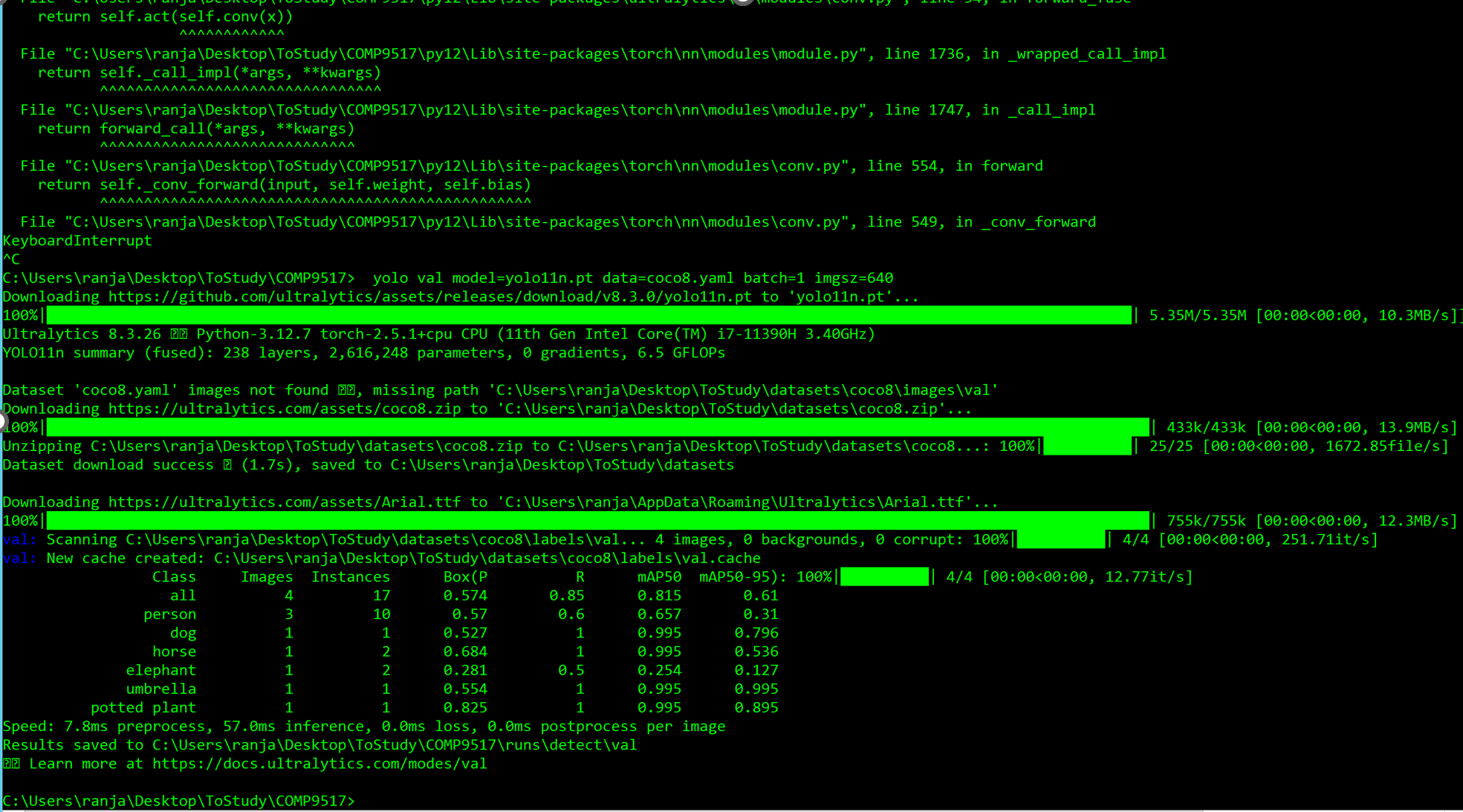
Export
Export a yolo11n classification model to ONNX format at image size 224 by 128 (no TASK required)
yolo export model=yolo11n-cls.pt format=onnx imgsz=224,128
导出模型
format=onnx:这表明导出的格式是 ONNX(Open Neural Network Exchange),这是一种开放的深度学习模型格式,用于在不同的框架和平台之间共享和使用模型。
imgsz=224,128:指定输入图像的尺寸为 224 像素(宽)和 128 像素(高)。这意味着在导出时,模型会调整其输入层的大小,以适应这一特定的图像尺寸。此参数确保当您使用导出的模型时,输入图像的尺寸符合要求。
Special
Run special commands to see version, view settings, run checks and more:
yolo help
yolo checks
yolo version
yolo settings
yolo copy-cfg
yolo cfg
Py代码
完成命令行的事儿
from ultralytics import YOLO
# Create a new YOLO model from scratch
model = YOLO("yolo11n.yaml")
# Load a pretrained YOLO model (recommended for training)
model = YOLO("yolo11n.pt")
# Train the model using the 'coco8.yaml' dataset for 3 epochs
results = model.train(data="coco8.yaml", epochs=3)
# Evaluate the model's performance on the validation set
results = model.val()
# Perform object detection on an image using the model
results = model("https://ultralytics.com/images/bus.jpg")
# Export the model to ONNX format
success = model.export(format="onnx")
训练数据和打标
https://github.com/Incalos/YOLO-Datasets-And-Training-Methods/blob/master/README_CN.md
pip install labelimg
labelimg
命令直接启动labelimg
结论
https://www.kaggle.com/code/creazyeeeeli/acsnansck#Training
https://docs.ultralytics.com/models/yolov8/#performance-metrics
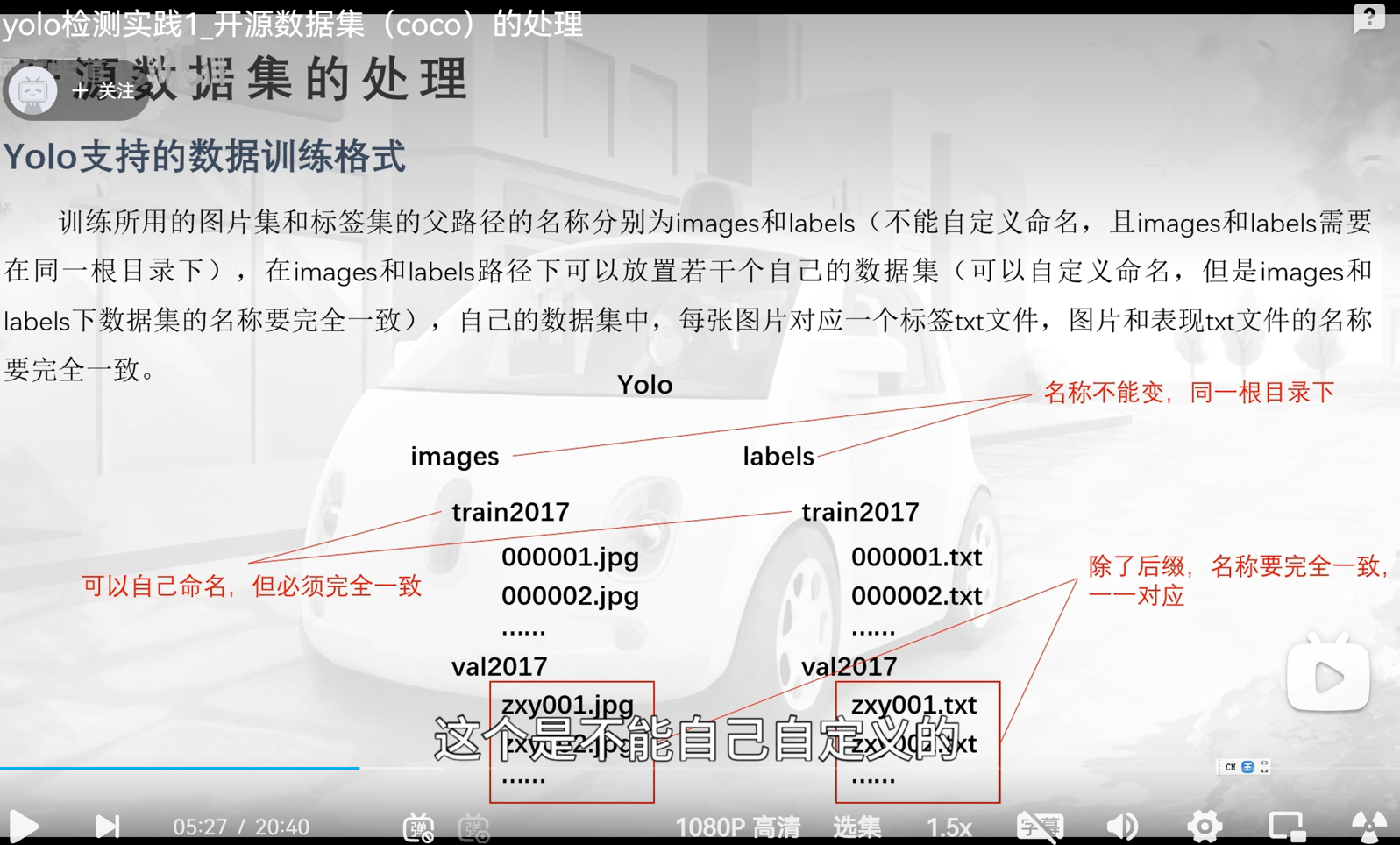
数据格式化处理
RLE转mask
最开始看着那个RLE数据,是奇数个,而非偶数个,最开始以为RLE出错了。
后来李顺想到,可能是“前景,背景,前景,背景。。。”这样交替下来的像素
然后我觉得应该是对的,于是写了个脚本:
一个图片对应多个segments,因此每个segment都是一个掩码图片,最终我把这些掩码图片叠加起来得到最终掩码图片。
1.坑:图片全黑
最开始我处理掩码,一维转二维,都只用0,1表示,然后保存成图片,但是最终所有图片全黑。我百思不得其解,但是最终发现原来单通道图片是一个字节表示一个像素,是0-255,有灰阶的,不是单纯的非黑即白。因此我直接令np.array矩阵点乘255,得到图片。
2.坑:重复连续
应该是我们自己写的rle数据转mask存在问题,我们写的不对,导致其看起来像高中学的正选波形一样在图片上重复。
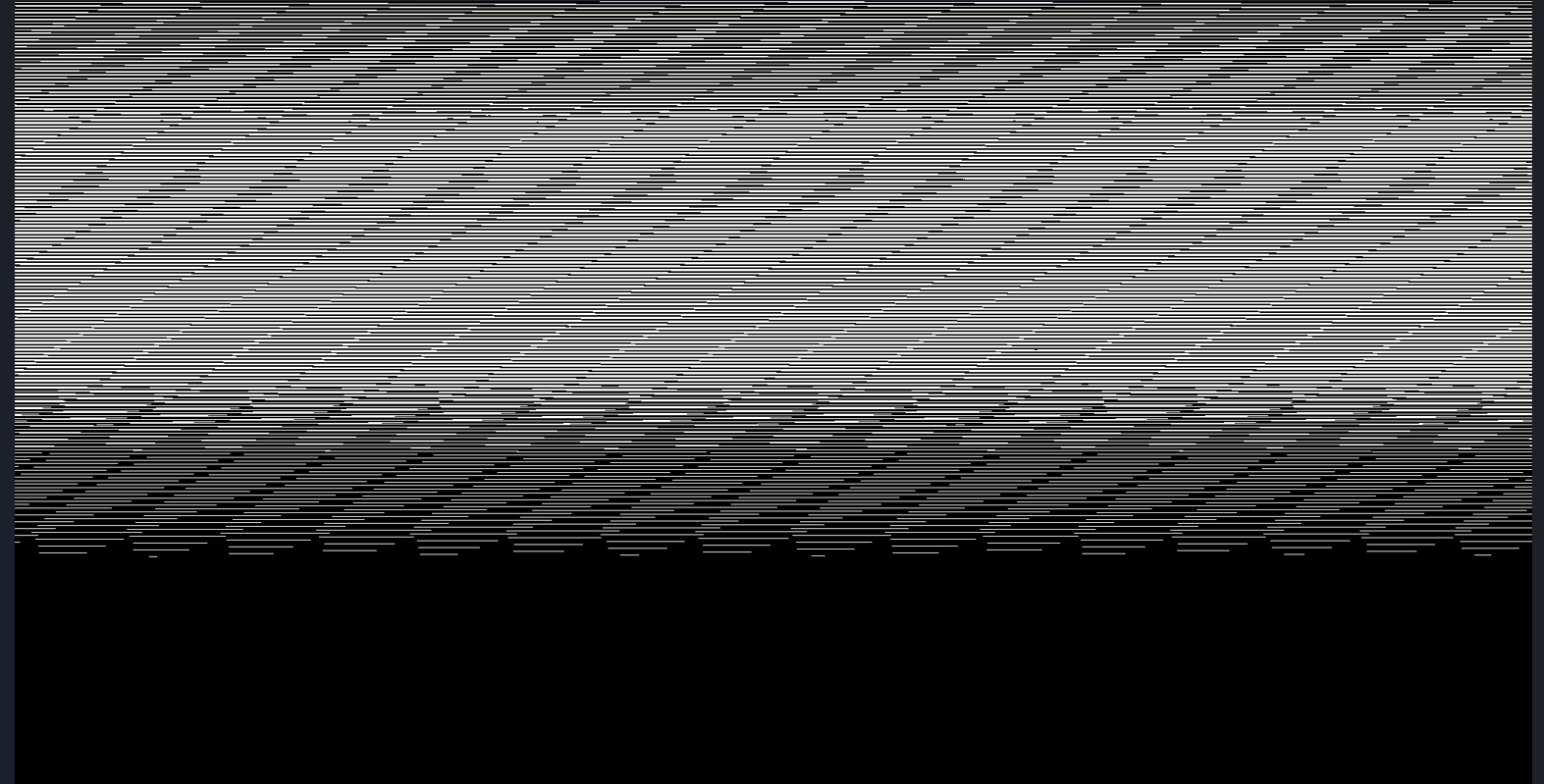

使用coco进行解码,rle->mask解码正确。
后来顺哥意识到,应该有其他库能进行解码,然后找到了coco去进行解码,正确。
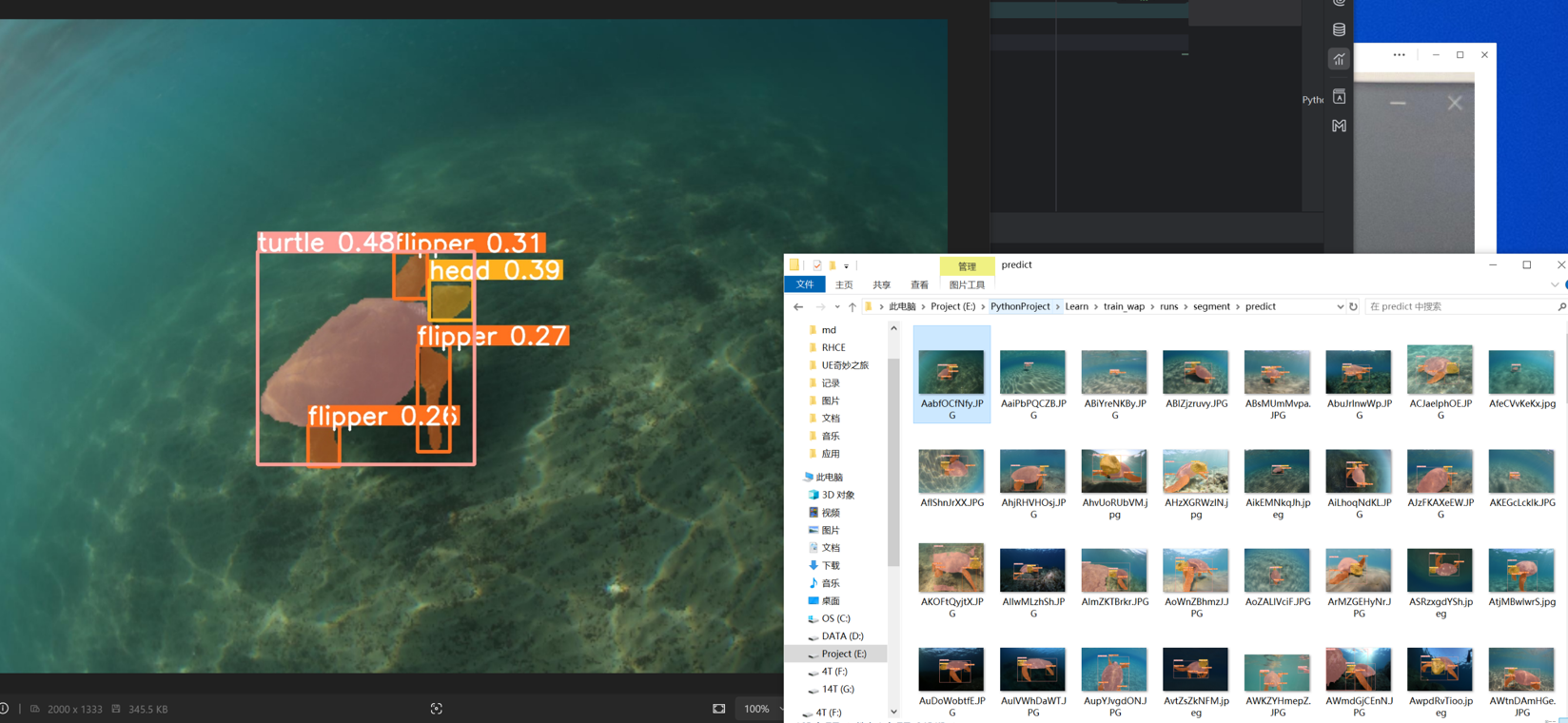

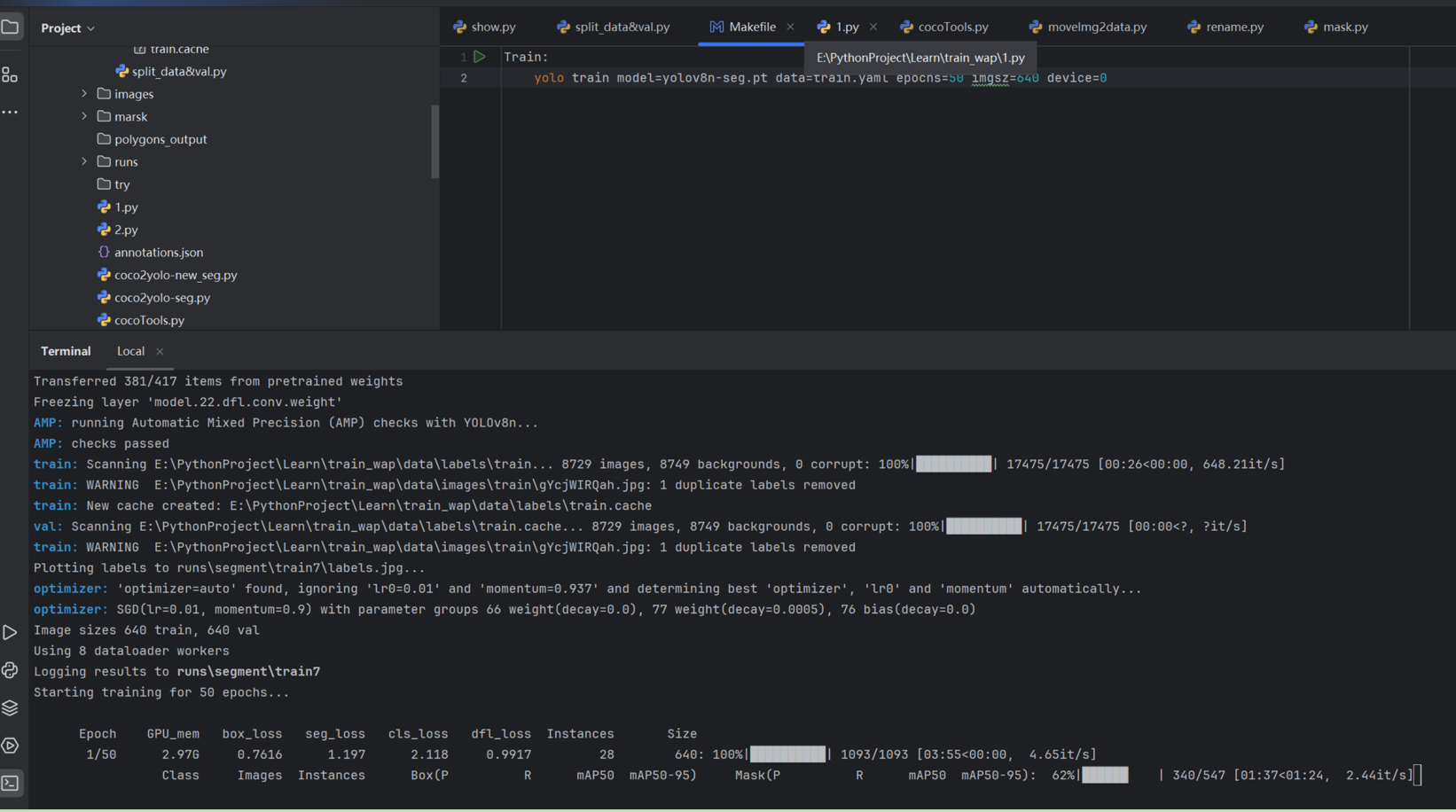
训练
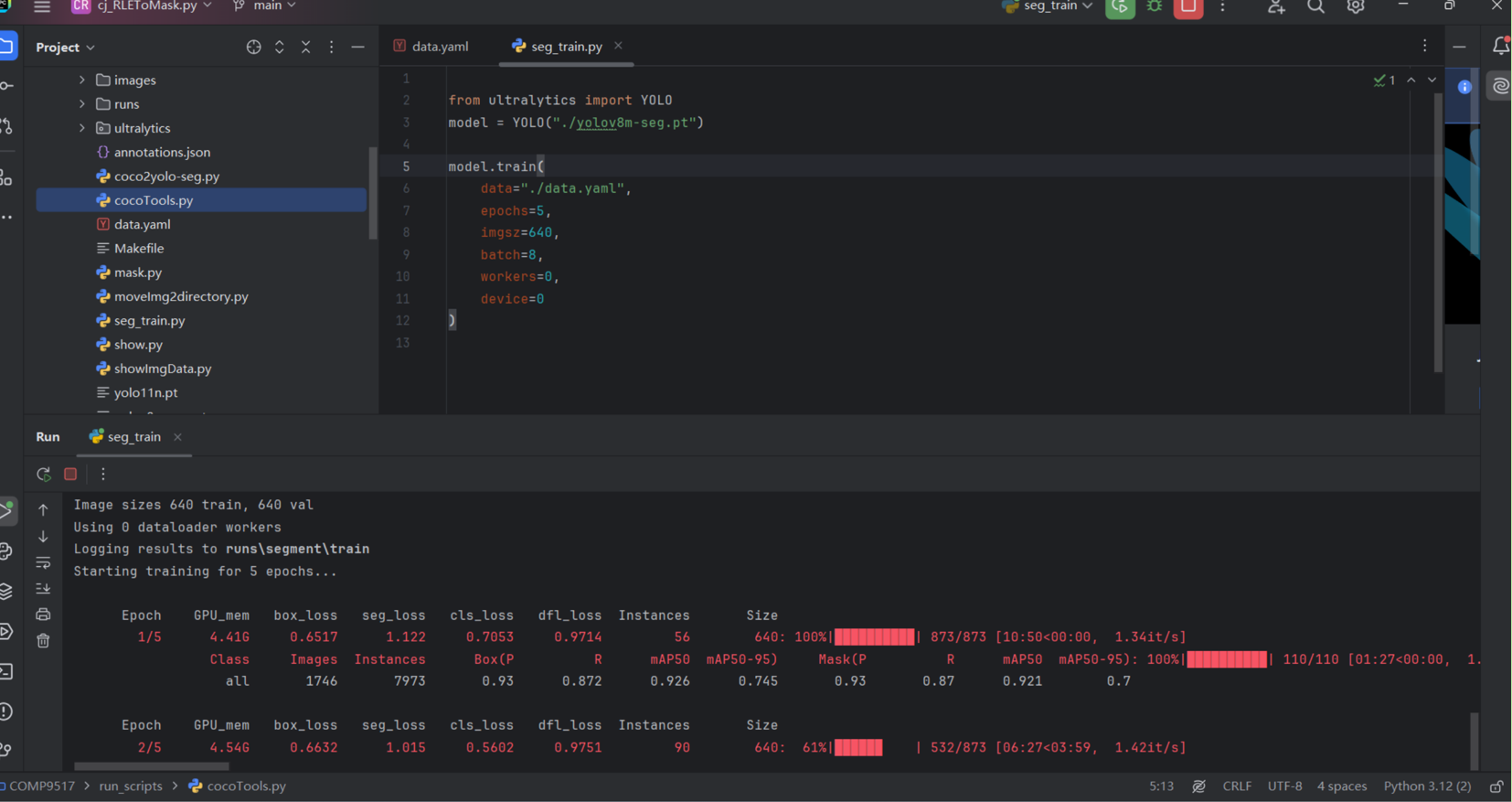
Welcome to point out the mistakes and faults!